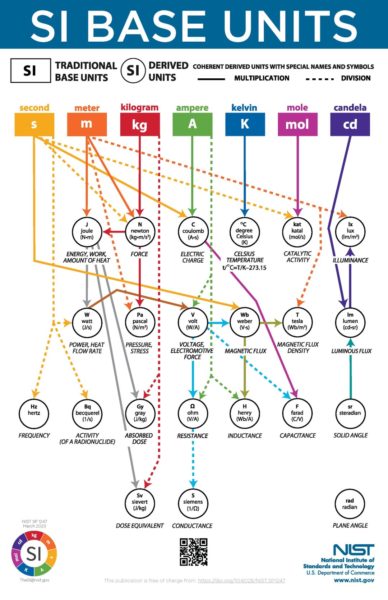What is Force?
In his second law, Sir Isaac Newton stated that force controls motion; therefore, we must control the force if we are to control the motion. An example of force: I have an egg in my hand and want to break it by squeezing it in my hand. This egg will break at X known force. No matter where I am in the world, the same amount of force will be required to break the egg in my hand. It will not take less force to break this egg in Pennsylvania than in Peru.
What is Force, The basic definition of force is mass times acceleration. The mathematical expression of Newton's second law of motion:
∑F = m x a
Where ∑F = summation of all external forces applied to the particle
m = the mass of the particle
a = the acceleration of the particle
Force is a derived unit from the SI base units of Mass, Time, and Length. The International Committee for Weights and Measures in the Bureau International des Poids et Mesures (CIPM/BIPM) defines 1N as the force required to accelerate 1 kg to 1 meter per second per second in a vacuum. It is no surprise that the SI unit of force is expressed in Newtons (N).
The BIPM SI brochure states, "The weight of a body is the product of its mass and the acceleration due to gravity; in particular, the standard weight of a body is the product of its mass, and the standard acceleration due to gravity; The value adopted in the International Service of Weights and Measures for the standard acceleration due to gravity is 980.665 cm/s2 (9.806 65 m/s2); a value already stated in the laws of some countries."
A major benefit to performing force measurements is that force is essentially the same anywhere in the world. Weights used for force do require the correction for local gravity, air density, and material density. Any weights adjusted for force cannot be used elsewhere without further correction to the new gravity, and air buoyancy. Force-measuring instruments calibrated using force weights can be used anywhere in the world without any further corrections.
There are several published standards for force measurements and many other standards that reference these standards. The most recognized standards for force measurement are ISO 376 for most of Europe, and ASTM E74 for North America.
The ASTM International E74-18: Standard Practices for Calibration and Verification for Force-Measuring Instruments gives guidance on how to correct materials like those used to manufacture weights for force. ASTM International states, "The force exerted by a weight in air is calculated as follows:
Force = Mg / 9.80665 S (1- d/D)
where:
M = mass of the weight,
g = local acceleration due to gravity, m/s2,
d = air density (approximately 0.0012 Mg/m3),
D = density of the weight in the same units as d, and
9.80665 = the factor converting SI units of force into the customary units of force. For SI units, this factor is not used."3
The recommendation for force weights is to use steel with a uniform density since part of the equation for force relies on knowing the material density and the associated uncertainties of that measurement. Knowing a theoretical density is not the same as having the density tested. Furthermore, the less uniform the density, the higher the probability of distorting the load path when using weights adjusted for force.

Figure What is Force: SI Units courtesy of NIST [i]
Calibration is the comparison of an unknown (typically referred to as the Unit Under Test or UUT) to a device known within a certain error (typically referred to as the Calibration Standard or Reference Standard) to characterize the unknown. Therefore, force calibration compares a force instrument to a force reference standard to characterize the instrument.
[i] Reprinted courtesy of the National Institute of Standards and Technology, U.S. Department of Commerce. Not copyrightable in the United States.
What Is Force - Conclusion
If you enjoyed this article, check out our LinkedIn and YouTube channels for more helpful posts and videos.
At Morehouse, we educate our customers and provide solutions. Most of these solutions, which help you make better measurements, are available for free and can be found here.
We have been in business for over a century and focus on being the most recognized name in force sensor calibration. That vision comes from educating our customers on what matters most and having the proper discussions about force and why force is important so everyone understands the concepts.
We believe in changing how people think about force and torque calibration in everything we do. We challenge the "just calibrate it" mentality by educating our customers on what matters, what causes significant errors, and how to focus on reducing them.
In addition, Morehouse makes simple-to-use calibration products. We build excellent force equipment that is plumb, level, square, and rigid. Morehouse provides unparalleled calibration service with less than two-week lead times. Now that we answered What is Force, it might make sense to check out our other article on Why Force is Important
Want to watch the video on why you should use Morehouse for your load cell calibration? It can be found here.
Please call 717-843-0081 to speak with a live person or email info@mhforce.com. You can also visit us on the web at mhforce.com.
#What is Force


